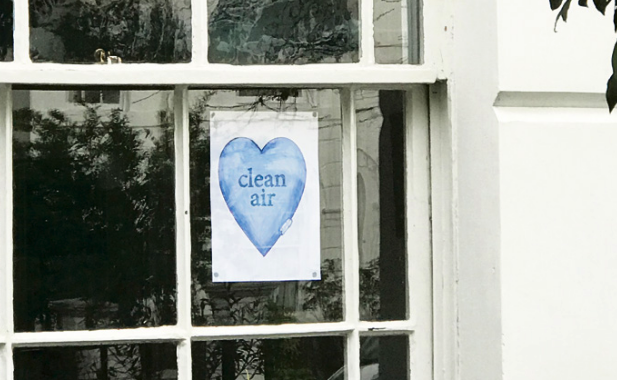People-friendly streets are welcome
Friday, 10th July 2020

People Friendly Streets: ‘our streets and neighbourhoods are again filling up with cars’
• AS a resident, parent, business owner and environmental campaigner in Islington, I welcome the important changes that the council is introducing to meaningfully reduce traffic in our streets, (First wards to get rat run-busting road improvements revealed, June 12).
Usually known as low-traffic neighbourhoods (LTNs) but referred to in Islington as people-friendly streets, these schemes are preventing non-local traffic to cut through an area using a combination of “filters” (planters, bollards, and ANPR technology).
Speed is truly of the essence, as our streets and neighbourhoods are again filling up with cars, and several wards should be seeing these changes introduced before the end of this year.
When implemented everyone living in such a designated neighbourhood can still access their home using a car, park their cars close to their homes, and emergency and service vehicles and accessible transport are still able to pass through.
What they do not allow, however, is people who do not live in the area to use the street or road as a cut-through to reach another destination.
The mind-blowing effect of an LTN, is that, not only do residential streets become nicer, safer, and healthier, net traffic tends to reduce overall, also on the main roads.
This is referred to as “traffic evaporation” and happens because of a change in a driver’s behaviour. As the journey in the car becomes comparably harder than walking, cycling, scooting the same distance, the driver will tend to avoid making the journey in the first place or use other means.
So why the need for such fast implementation?
• First, it is essential that air pollution is radically and quickly brought down – 25 people die prematurely every day in London because of it.
Since the ease of lockdown, air pollution from transport is on the steady increase, and without radical intervention it is likely to get even worse than before as we’re discouraged from using public transport.
• Secondly, scientific studies are now suggesting that people exposed to air pollution are more susceptible to and may recover slower from Covid-19. The return to the levels of air pollution previously experienced must therefore be prevented fast.
• Thirdly, the challenge in how to get people to move around London is not going away. There simply is not enough space if everyone usually relying on public transport opts for driving as their main transport.
Congestion is already a big issue and as the queues are starting to form again, emergency vehicles and key workers are prevented from getting to their destinations and hot-spots of pollution are created as a result of hundreds of stationary cars.
• Fourthly, our high-street and independent businesses were already struggling before, and many will not be able to reopen because of the impact of lockdown.
Creating safe and welcoming spaces for people to spend time, and allowing businesses to move out on the pavements, into car parking spaces, and use the outdoor space, makes sense.
Cars do not buy stuff. People do. And in areas where traffic has been deprioritised, paving the way for people, consumer spend goes up, not down.
• Finally, I think I speak for most of us when I say it was wonderful to experience a London without traffic, with the silence, revival of urban wildlife, ability to smell the grass, ease of breathing, the space suddenly available to people to be in their communities.
The return of the car is also seeing another isolation brought on, as neighbours do not feel safe to linger in their streets, children are hurried along streets full of roaring traffic and holding a conversations is impossible as traffic noise is overwhelming.
The possibility for Islington to be an even better place to live, work and be has never felt more real. Getting us out of our cars and into modes of active travel is needed, as is creating safer neighbourhoods within which we can travel by foot, bike or scooter.
It’s time we rally behind this initiative that will mean improved air for our children, safer streets for our elderly, more vulnerable, and disabled. And more space for people to be in their communities.
The other day two neighbours met for the first time, both having lived in their street for over 25 years, merely because a planter had been put into a parking space. Imagine what streets prioritising people over cars can do…
HELENA FARSTAD
Holloway